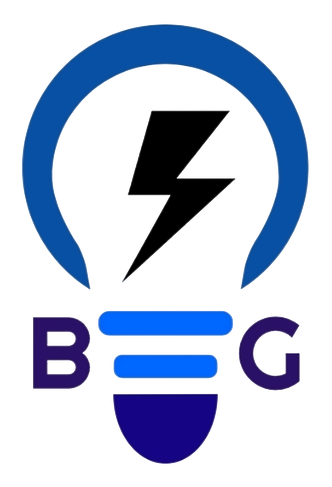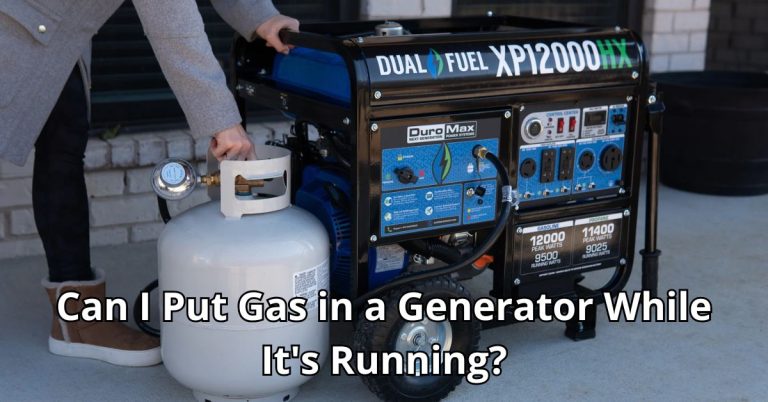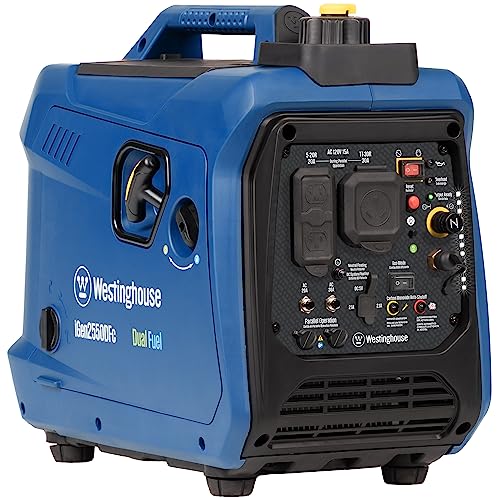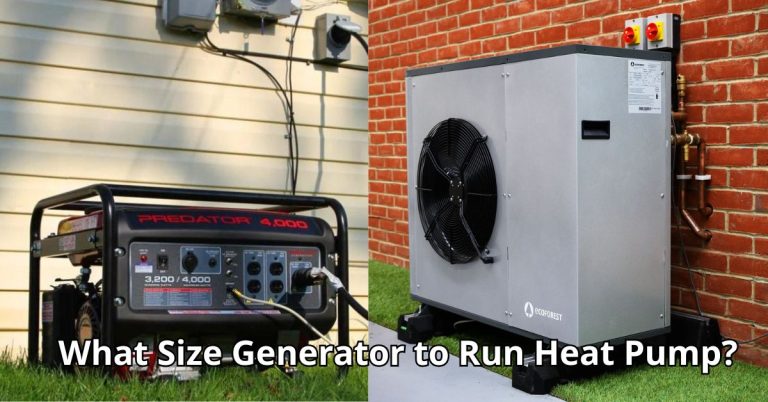Can You Leave a Generator Running Unattended: Safety Tips & Risks
No, you should not leave a generator running unattended. It’s unsafe and can cause serious problems.
Generators provide essential power during outages, but they require careful handling. Leaving a generator running without supervision can lead to accidents, fuel leaks, or even fires. It’s crucial to monitor your generator to ensure it operates safely and efficiently. Understanding the risks and best practices for generator use helps protect your home and loved ones.
We will explore the dangers of leaving a generator unattended and offer tips for safe operation. Stay informed and keep your power solutions reliable and secure.
Introduction To Generator Safety
Generators are essential in many situations. They provide power during outages and for outdoor activities. Proper safety measures are crucial for their operation. Understanding these measures prevents accidents and ensures safe use.
Importance Of Safety
Safety should be the top priority when using generators. Improper use can lead to serious risks. Carbon monoxide poisoning is a major concern. Generators emit this harmful gas. Ensure they are used in well-ventilated areas. Avoid using them indoors.
Fire hazards are another risk. Generators produce heat and can ignite nearby materials. Keep flammable items away from the generator. Follow the manufacturer’s guidelines to prevent overheating.
Common Uses Of Generators
Generators have several common uses. During power outages, they provide essential backup power. This keeps lights, appliances, and medical devices running. Outdoor events and camping trips also benefit from generator use. They power equipment and provide lighting in remote areas.
Construction sites often rely on generators. They power tools and machinery where there is no electricity. Generators are versatile and valuable in many scenarios.
Potential Risks Of Leaving Generators Unattended
Generators are essential during power outages. But, leaving them running unattended can pose several risks. Understanding these risks is crucial for safety. Let’s explore the potential dangers.
Fire Hazards
One major risk is fire hazards. Generators produce heat and can overheat if not monitored. This can lead to fires. Overloaded generators are especially prone to this risk.
Keep the generator away from flammable materials. Ensure proper ventilation to reduce overheating chances. Regular maintenance checks are necessary.
Carbon Monoxide Poisoning
Another critical risk is carbon monoxide poisoning. Generators emit carbon monoxide, a deadly gas. Running them in enclosed spaces increases this risk.
Place generators outside, away from windows and doors. Use carbon monoxide detectors to monitor levels. Ensure the exhaust is not blocked.
Essential Safety Tips
Leaving a generator running unattended can pose several safety risks. It’s crucial to follow essential safety tips to ensure the well-being of your home and loved ones. Below are some key points to keep in mind.
Proper Ventilation
Generators produce dangerous fumes, including carbon monoxide. Always place your generator outside in a well-ventilated area. Never run it inside your home, garage, or near windows. Good ventilation will help disperse harmful gases.
Regular Maintenance
Regular maintenance is key to a safe generator operation. Check the oil levels and fuel system before each use. Inspect for any wear and tear on parts. Clean the filters and replace them as needed. Keeping your generator well-maintained reduces the risk of malfunction.
Choosing The Right Location
Choosing the right location for your generator is crucial. It ensures safety and efficiency. A poor placement can lead to hazards. This section covers the best practices for placing your generator.
Outdoor Placement
Place your generator outdoors. Never operate it inside your home or garage. Indoor use can lead to carbon monoxide poisoning. Fresh air is vital for safe operation.
Consider using a generator tent or enclosure. It protects the generator from rain and snow. This prolongs the generator’s lifespan. But remember, the enclosure must allow proper ventilation.
Safe Distance From Structures
Keep the generator at least 20 feet from any structure. This includes your house, garage, and sheds. This distance prevents fumes from entering your home. It also reduces the risk of fire.
Ensure the exhaust faces away from doors and windows. This further minimizes the risk of fumes entering your home. Never place the generator under a deck or near an open window.
| Placement | Guidelines |
|---|---|
| Outdoors | Always place the generator outside. |
| Distance | Keep at least 20 feet from structures. |
| Ventilation | Ensure proper ventilation in the enclosure. |
| Exhaust Direction | Face exhaust away from doors and windows. |
Following these placement guidelines ensures safe and efficient operation. Always prioritize safety when using your generator.
Emergency Preparedness
Leaving a generator running unattended can be dangerous. It may cause overheating, fuel leaks, or carbon monoxide poisoning. Always monitor a running generator for safety.
Emergencies can happen without warning. Being prepared is crucial. Generators play a vital role during power outages. They provide power when the grid fails. But leaving a generator running unattended can be risky.
Installing Alarms
Install alarms to detect generator issues. Carbon monoxide alarms are essential. They alert you to dangerous gas levels. Place them near the generator. Also, install smoke detectors. They can warn you of fires.
Emergency Shutdown Procedures
Know how to shut down the generator quickly. Practice emergency shutdown procedures. Keep the generator manual handy. Ensure all family members know the steps. This knowledge can prevent accidents. It can save lives during emergencies.
Security Measures
When leaving a generator running unattended, security measures are crucial. These steps ensure safety and prevent unauthorized access or theft. Proper security minimizes risks and ensures the generator’s longevity and functionality.
Preventing Theft
Generators can be a target for thieves. To prevent theft, secure the generator with a heavy-duty chain. Lock it to a fixed object like a post or concrete anchor. Use high-quality locks that are difficult to cut. Place the generator in a well-lit area. Thieves avoid areas where they can be seen. Lastly, consider a generator enclosure. This adds an extra layer of protection.
Surveillance Options
Surveillance can deter potential thieves. Install security cameras around the generator. Choose cameras with night vision for 24/7 monitoring. Motion-activated cameras can alert you to any movement. Signs indicating surveillance can also deter theft. Use a camera system that allows remote monitoring. This way, you can check on the generator anytime.
Managing Fuel
Leaving a generator running unattended poses several challenges, one of which is managing fuel. Proper fuel management ensures your generator runs smoothly and safely. Here, we will discuss safe storage and refueling guidelines to help you manage fuel effectively.
Safe Storage
Storing fuel safely is crucial. Keep fuel in approved containers. These containers should be labeled and stored in a cool, dry place. Avoid direct sunlight to prevent fuel degradation.
Ensure the storage area is well-ventilated. This minimizes the risk of fumes building up, which can be hazardous. Keep fuel away from living spaces to avoid accidents.
Store only the amount of fuel you need. Excess fuel increases the risk of spills and contamination. Regularly check the containers for leaks and replace them if damaged.
Refueling Guidelines
Refueling a generator safely requires caution. Turn off the generator before refueling. Let it cool down for at least 15 minutes. This prevents the risk of fire or explosion.
Use a funnel to pour fuel into the tank. This helps avoid spills and overfilling. Wipe any spills immediately to prevent accidents. Keep a fire extinguisher nearby for emergencies.
Refuel in a well-ventilated area. This reduces the risk of inhaling harmful fumes. Avoid smoking or using open flames near the refueling area. Always follow the manufacturer’s guidelines for refueling.
By following these simple steps, you can manage your generator’s fuel efficiently and safely. This ensures your generator operates smoothly when you need it most.
Alternatives To Leaving Generators Unattended
Leaving a generator running unattended can be risky. But there are alternatives to ensure safety and efficiency. In this section, we will explore two effective solutions: Automatic Transfer Switches and Remote Monitoring Systems.
Automatic Transfer Switches
An Automatic Transfer Switch (ATS) is a reliable device that automatically switches the power source. It detects power loss and immediately shifts the load to the generator. This ensures a smooth power transition without manual intervention.
- Ensures continuous power supply.
- Reduces the risk of power outages.
- Minimizes downtime and improves efficiency.
ATS is essential for critical applications. Hospitals, data centers, and even homes benefit from it. It provides peace of mind and reliability.
Remote Monitoring Systems
Remote Monitoring Systems allow you to monitor your generator’s performance from a distance. These systems provide real-time updates and alerts. This can include fuel levels, battery status, and overall health.
- Receive instant notifications on issues.
- Monitor generator from anywhere using a smartphone or computer.
- Plan maintenance proactively and avoid unexpected breakdowns.
Remote monitoring ensures you stay informed. It helps in taking timely actions and ensures your generator runs smoothly. Both ATS and remote monitoring offer practical solutions. They help in avoiding the risks of leaving generators unattended.
Frequently Asked Questions
Is It Safe To Leave A Generator Running Unattended?
No, it’s not safe to leave a generator running unattended. Generators can pose fire hazards and carbon monoxide risks. Always monitor their operation.
How Long Can A Generator Run Without Supervision?
A generator shouldn’t run without supervision for more than a few hours. Regular checks are necessary to prevent overheating and fuel issues.
What Precautions Should I Take With An Unattended Generator?
Ensure the generator is in a well-ventilated area. Regularly check fuel levels and ensure it’s properly maintained to avoid risks.
Can An Automatic Shutoff Feature Help With Unattended Generators?
Yes, an automatic shutoff feature can add safety. It turns off the generator in case of overheating or low oil levels.
Conclusion
Leaving a generator running unattended poses risks. Fires, carbon monoxide poisoning, and theft are concerns. Always follow safety guidelines. Regular checks ensure proper functioning. Secure the generator location. Keep it dry and ventilated. Use a carbon monoxide detector. Safety first, always.
Your peace of mind is worth the extra care. Stay safe and use your generator responsibly.







